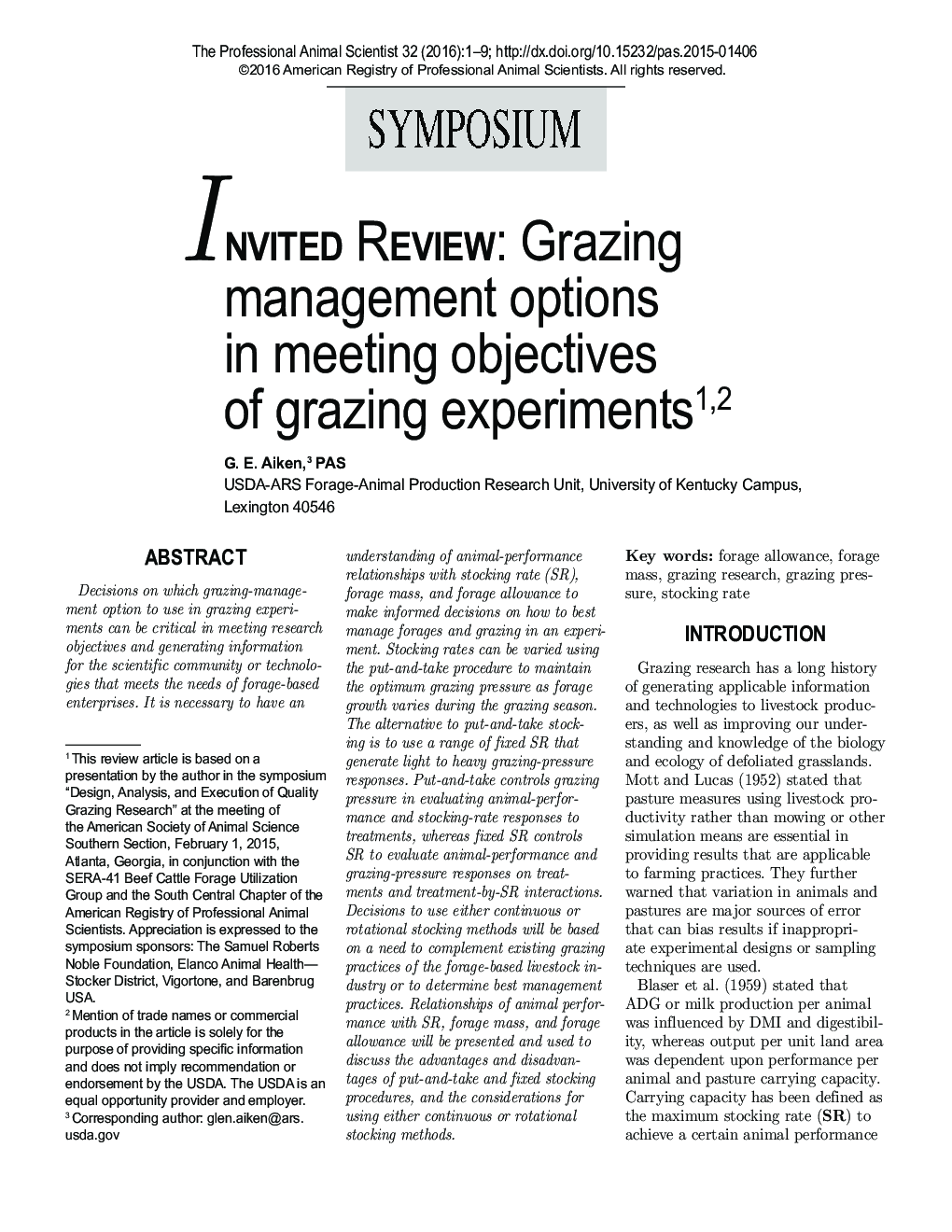| Article ID | Journal | Published Year | Pages | File Type |
|---|---|---|---|---|
| 10161738 | The Professional Animal Scientist | 2016 | 9 Pages |
Abstract
Decisions on which grazing-management option to use in grazing experiments can be critical in meeting research objectives and generating information for the scientific community or technologies that meets the needs of forage-based enterprises. It is necessary to have an understanding of animal-performance relationships with stocking rate (SR), forage mass, and forage allowance to make informed decisions on how to best manage forages and grazing in an experiment. Stocking rates can be varied using the put-and-take procedure to maintain the optimum grazing pressure as forage growth varies during the grazing season. The alternative to put-and-take stocking is to use a range of fixed SR that generate light to heavy grazing-pressure responses. Put-and-take controls grazing pressure in evaluating animal-performance and stocking-rate responses to treatments, whereas fixed SR controls SR to evaluate animal-performance and grazing-pressure responses on treatments and treatment-by-SR interactions. Decisions to use either continuous or rotational stocking methods will be based on a need to complement existing grazing practices of the forage-based livestock industry or to determine best management practices. Relationships of animal performance with SR, forage mass, and forage allowance will be presented and used to discuss the advantages and disadvantages of put-and-take and fixed stocking procedures, and the considerations for using either continuous or rotational stocking methods.
Related Topics
Life Sciences
Agricultural and Biological Sciences
Animal Science and Zoology
Authors
G.E. PAS,
